‘An Experimental Space Where the Past and Present Converge’
The Hirosaki Museum of Contemporary Art, located in the former Yoshino-cho Brick Warehouse built in the Meiji and Taisho periods, was renovated by architect TANE Tsuyoshi and opened in 2020. This historic brick warehouse has long shaped the townscape of Hirosaki as a modern industrial heritage site and now serves as a venue for showcasing innovative art from both Japan and abroad. The museum also focuses on collecting and displaying contemporary works that engage with the history and culture of Hirosaki and the broader Tohoku region.
In addition to its exhibition rooms, the museum offers facilities such as a studio for music performances and dance practice, and a community gallery for local creative presentations. In addition to its exhibition spaces, the museum offers facilities such as a studio for music and dance practice, as well as a community gallery for local creative showcases. With a mission to function as a "Creative Hub”—a cultural center fostering new activities—the museum aims to bring people together and inspire collaboration. In this column I would like to focus on how the exhibition spaces are being used to support this vision.
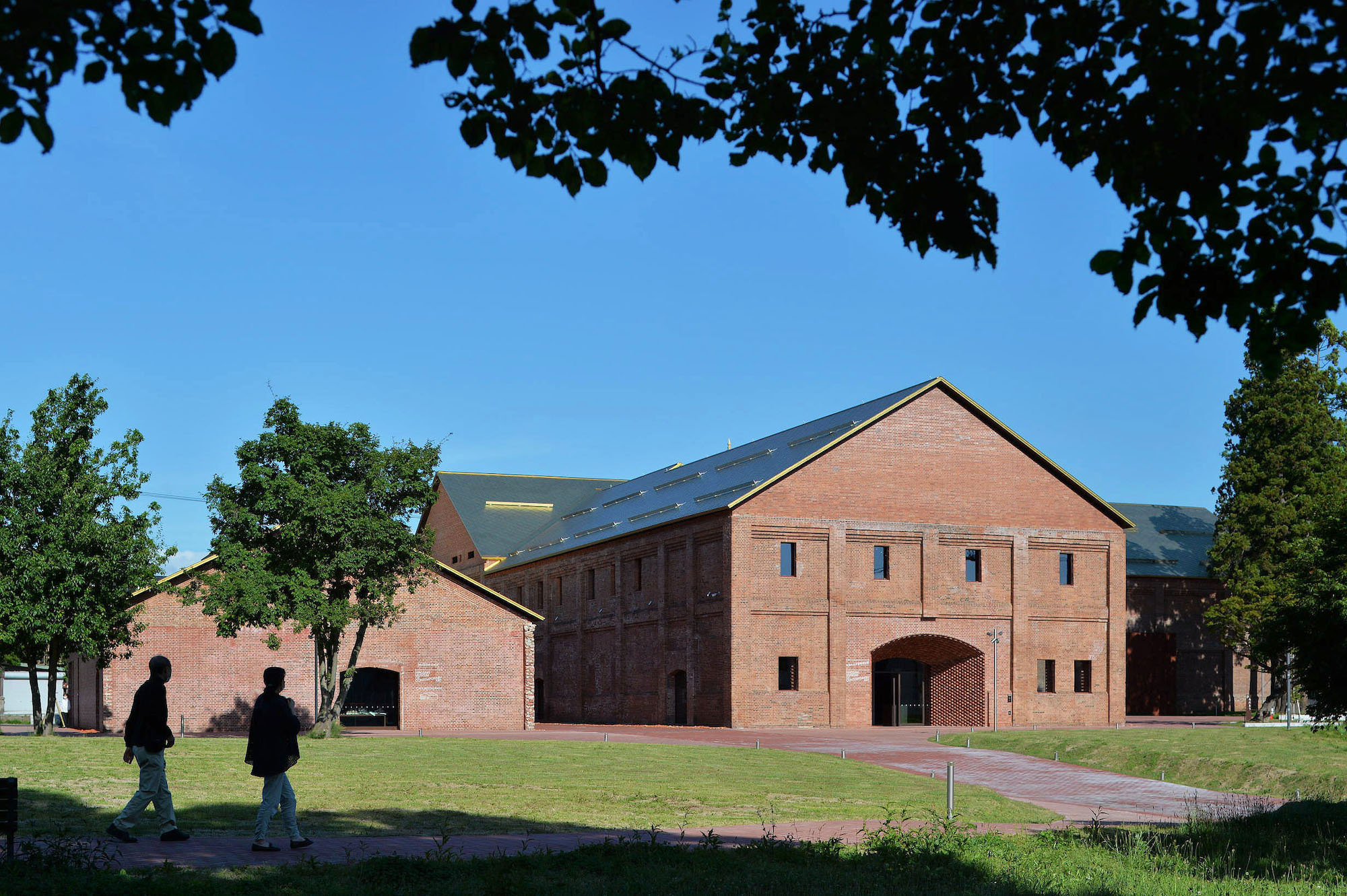
Upon entering the exhibition space on the first floor, you’re immediately greeted by elements that reflect the building’s history as a warehouse: the iron staircase that leads to a dead end at the ceiling, the black tar-coated walls, and the thick columns. With the concept of ‘continuous memories’ in mind, the renovation focused on enhancing the seismic resilience of the brick structure while preserving as much of the original architecture as possible. These unique features of the space play a key role in shaping the museum’s approach to exhibitions and collection building. A major focus is on the site-specific nature of the works, with an emphasis on commissioning pieces that respond to both the building’s architecture and the local context. This process of creating, displaying, and then adding works to the collection helps define the museum’s evolving collection.
In some of the adjacent exhibition rooms, the spaces are not fully separated by walls. In previous exhibitions, the building's unique features have been creatively utilized, unlocking new possibilities for how the space can be used. For example, in the 2022 Exhibition [Spring/Summer] Ryoji Ikeda | solo exhibition, Ikeda—who is also a musician—approached the entire exhibition as one cohesive piece of music. He intentionally designed the display to allow the soundscapes of adjacent video works to overlap, resulting in a dynamic installation where complex layers of sound enveloped the audience, creating an immersive and powerful experience.
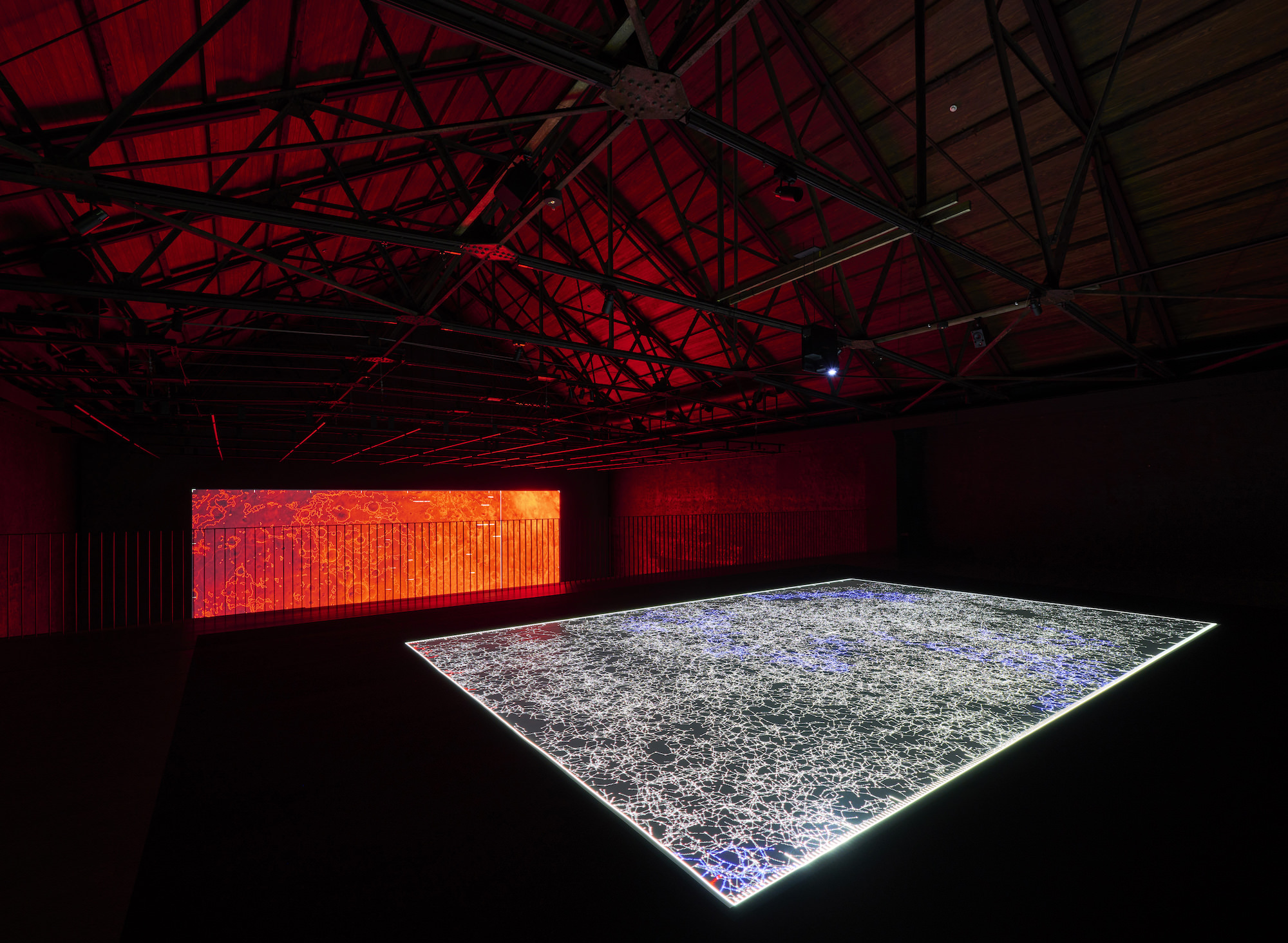
Photo: Takeshi Asano
As you move deeper into the museum, you’ll encounter one of the most striking features of the exhibition space: a vast, 15-meter-high wall. How artworks are showcased in this expansive area is a central theme of our exhibition planning.
For instance, OZAWA Tsuyoshi, working with a local neputa float artisan, created an intricate installation, The Return of S.T. (2020), using wire and washi paper. Similarly, Cerith WYN EVANS’ massive abstract sculpture, "Drawing in Light (and Time) ...suspended" (2020), made by combining various neon elements, illuminated the darkened gallery and sparked a rich imaginative journey that begins with a single apple. This piece was featured throughout two exhibitions in 2021, allowing us to explore flexible and dynamic exhibition design that fully utilizes the potential of the brick warehouse building.
Thanks to the museum’s open-plan layout, moving from the first to the second floor provides a completely different perspective on the same work. From above, you can look down on pieces displayed on the floor or walls, or view three-dimensional works up close, suspended from high battens near the ceiling. As a contemporary art museum, we showcase a variety of mediums, including paintings, sculptures, videos, and installations, inviting visitors to experience art from multiple angles and perspectives.
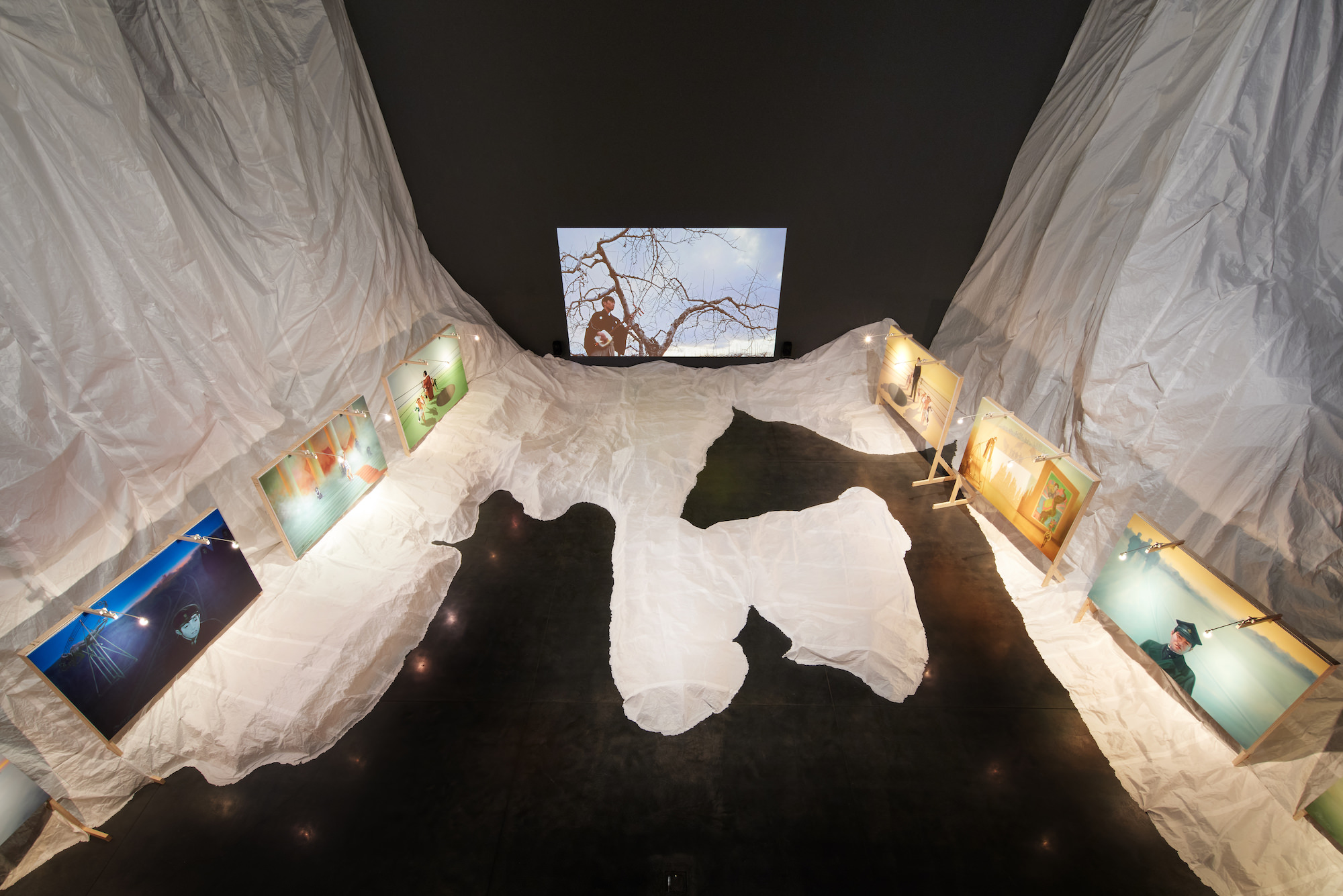
Photo: Tomoyuki Kusunose
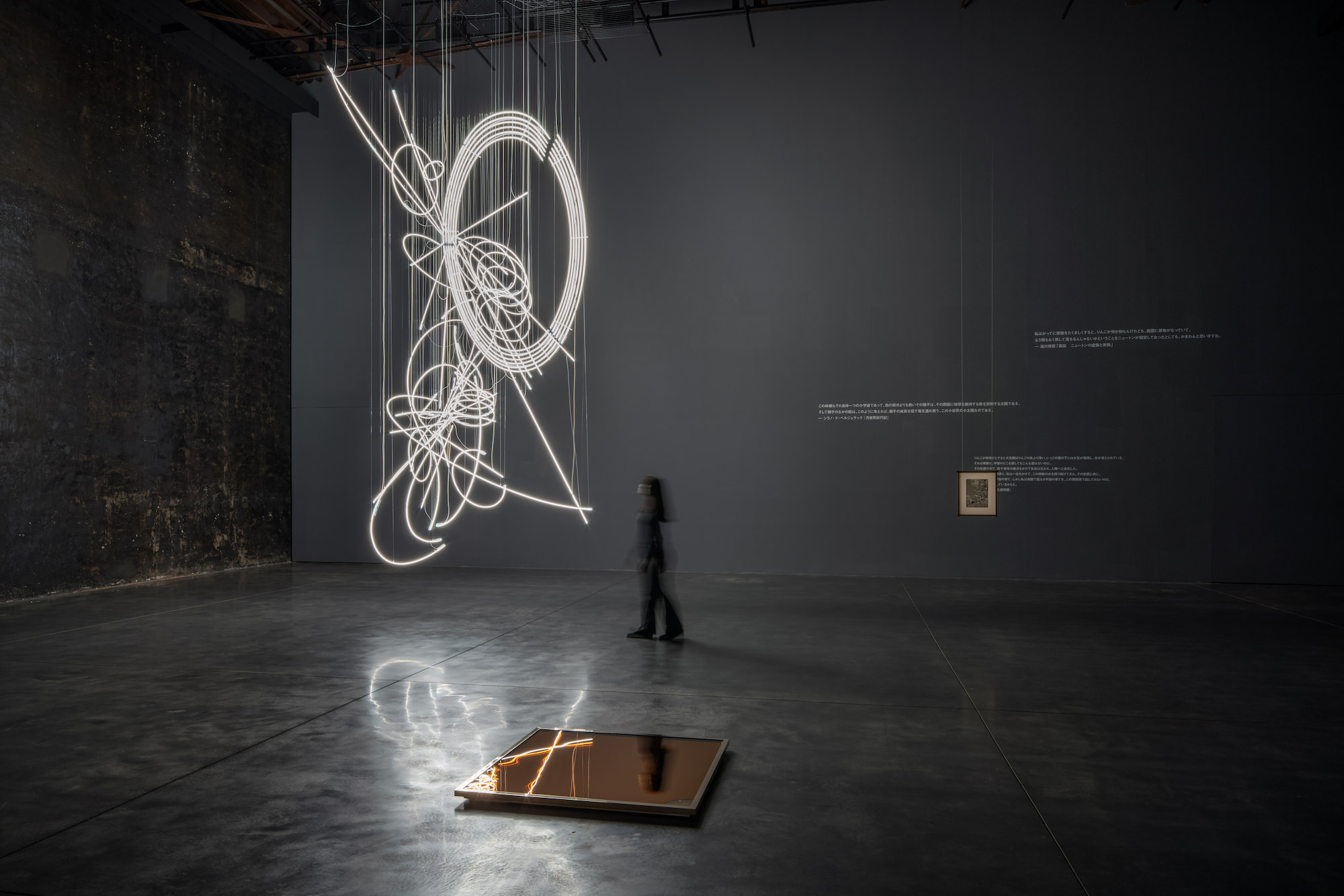
Photo: ToLoLo Studio
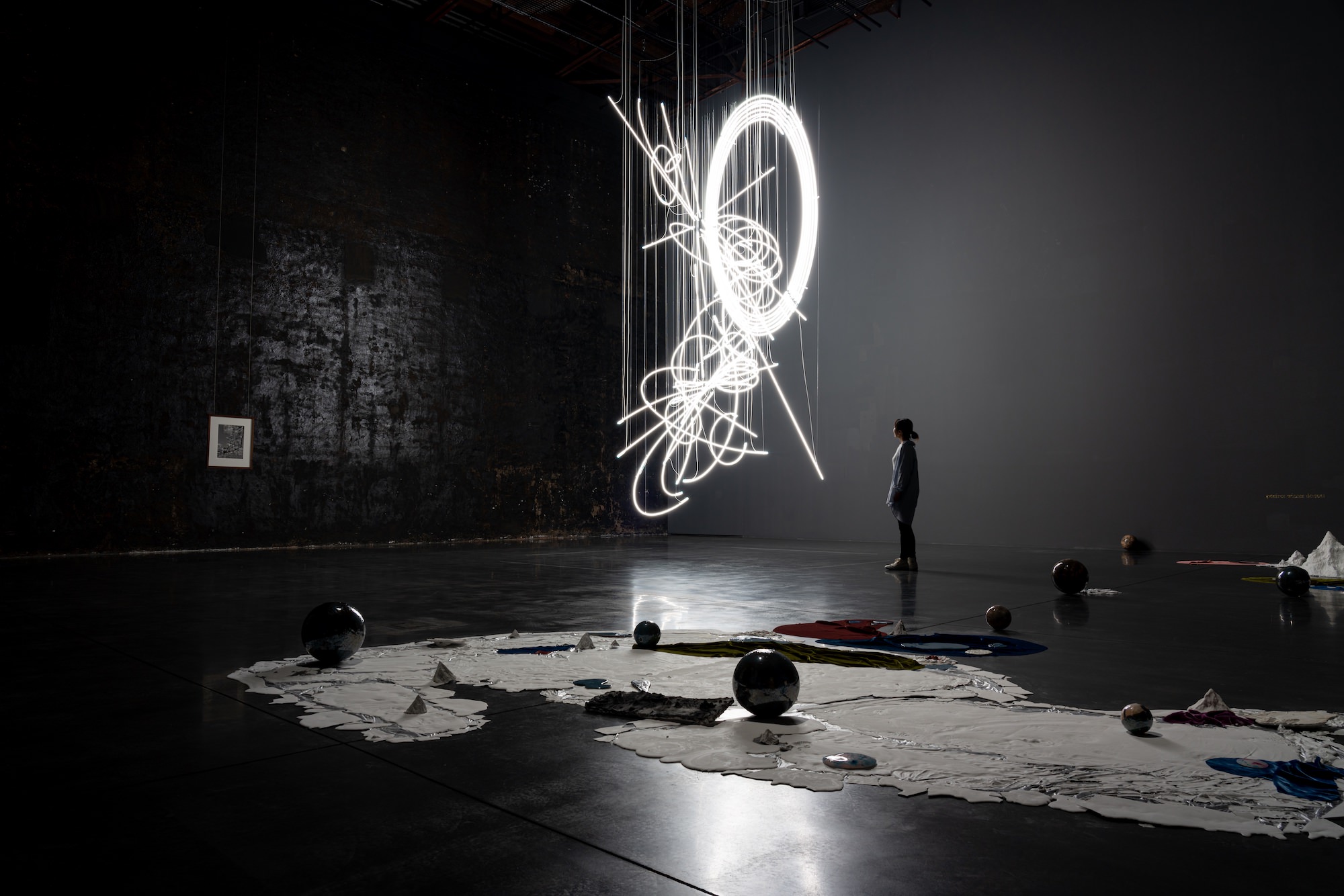
Photo: Sho Shibata
On the second floor is the White Cube space encapsulated by white walls and ceiling, which not only serves as an exhibition area but also hosts the ‘Hirosaki Exchange’ program throughout the year. This program collaborates with artists, creators, and researchers from Hirosaki or with ties to the region, aiming to explore the local identity and rediscover its creative potential. So far, the program has included material exhibitions and talk events. For the 2022 Exhibition [Autum/Winter], Hello, How Can We Do a Nara Yoshitomo Show? Documents on Nara Yoshitomo’s Hirosaki Exhibitions 2002-2006, the space was used as a ‘clubroom,’ where project participants could freely gather and create during the exhibition.
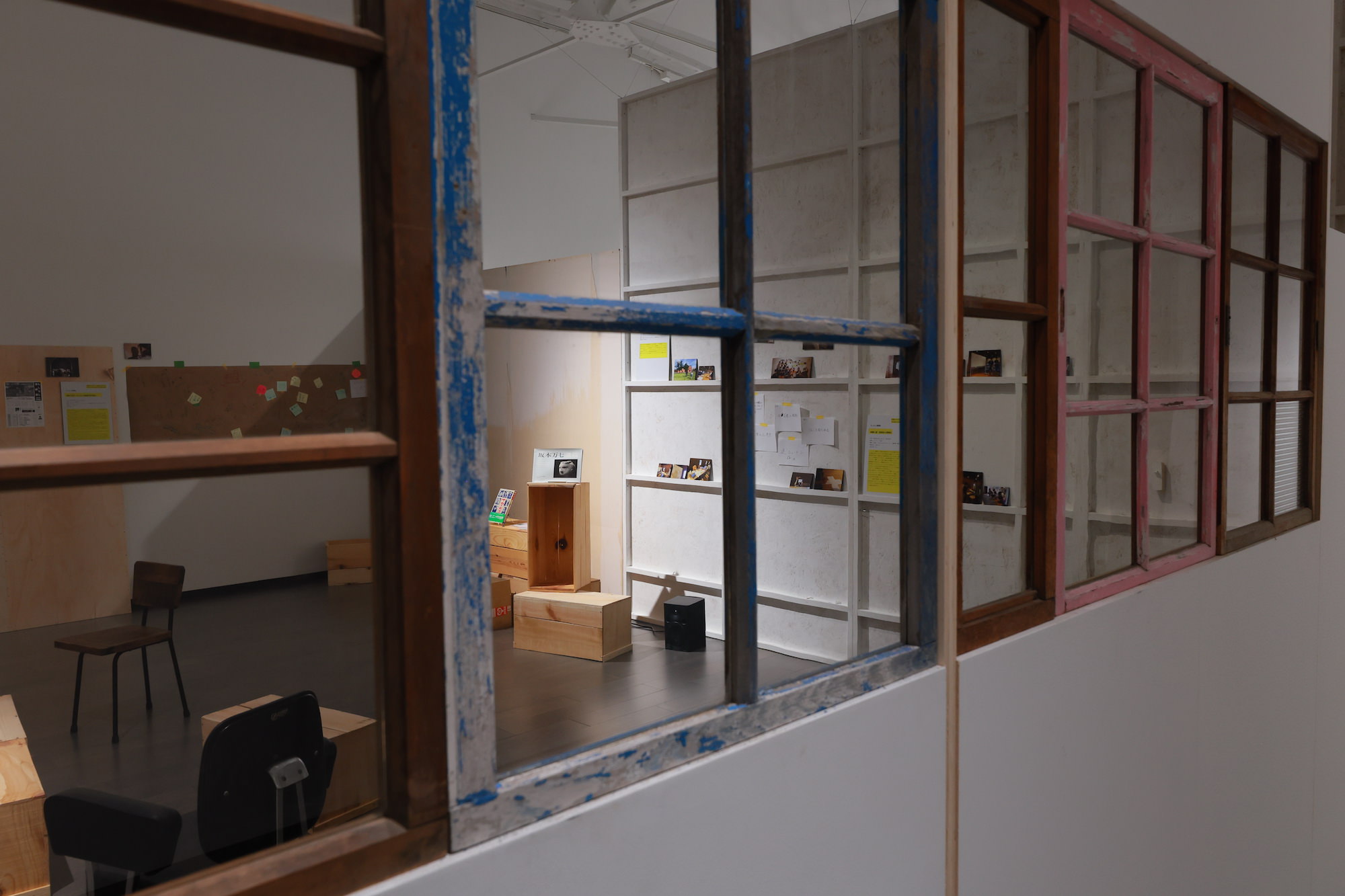
Photo: Masayuki Hasegawa
By blending the works of contemporary artists with the ongoing activities of people connected to this place, the building, while still preserving the land’s history, becomes a point where the past and present intersect. As we continue to develop new programs, our goal is to create an ever-evolving, experimental space.
SASAKI Yoko
Assistant Curator, Hirosaki Museum of Contemporary Art. Born in Hokkaido Prefecture, she joined the museum in April 2020 and has been involved in various curatorial duties. Sasaki was the lead curator for the 2022 Exhibition [Autumn/Winter] Hello, How Can We Do a Nara Yoshitomo Show? Documents on Nara Yoshitomo’s Hirosaki Exhibitions 2002-2006.